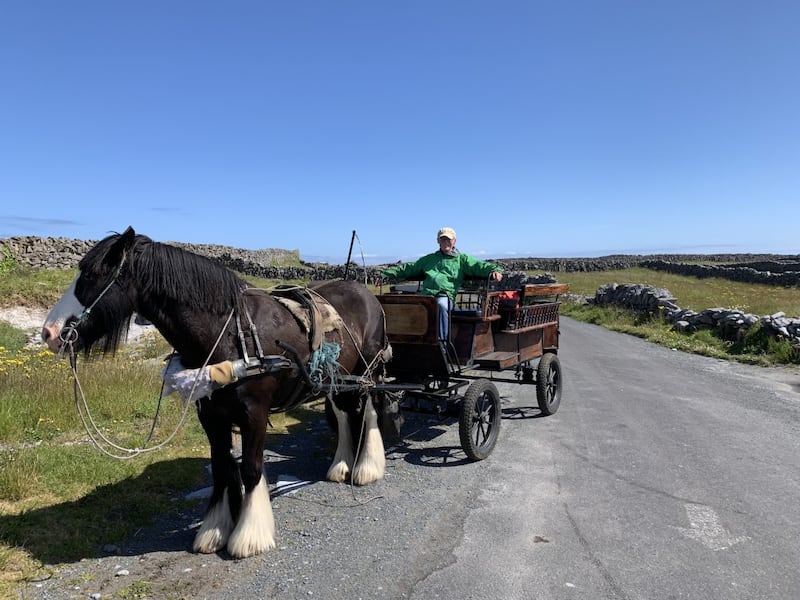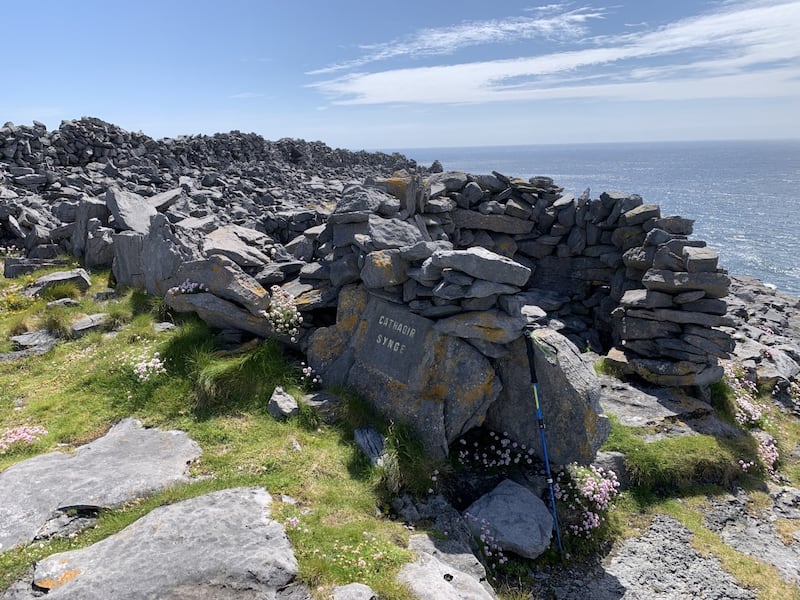When the barriers were finally lifted on intercounty travel this summer, and the Garda checkpoints melted away, we were told we were “free to go”, literally and legally, anywhere on our lovely island.
The sun came out and brightly illuminated our world of new possibilities. Sunlit images of our west coast and the remembered beauty of its bays and islands, and little stone piers and harbours, its immense skies and sands, all worked their ancient soothing charm into our Covid-stressed minds.
But, for east-coast dwellers, practical considerations nibbled at emerging enthusiasms; restrictions meant there was as yet nowhere to stay or lay one’s head, nowhere to sit down and have a pint or be served a meal.
I had set my heart on the Atlantic and the Burren. RTÉ's beautiful documentary The Burren: Heart of Stone drew me to the coast of Co Clare and, ultimately, more by happenstance than plan, into Fanore car park, my delightful new home for three sun-filled summer days. As an otherwise law-abiding citizen, the large No Overnight Parking sign struck me as strangely irrelevant in our new world of Covid regulations.
I took the Spirit of Doolin to <a class="search" href='javascript:window.parent.actionEventData({$contentId:"7.1213540", $action:"view", $target:"work"})' polopoly:contentid="7.1213540" polopoly:searchtag="tag_location">Inis Oírr</a>, a busy island harbour of ponies and traps and tractor tours and bike hires, and fishing boats sorting out their catches
In terms of location, amenities and services, Fanore’s car park was five star. It has the best beach on the Clare coast, plus a deck and seats for chilling and taking in sunsets and spectacular Connemara and island views. I found an excellent boardwalk down through the dunes to the shore, a shower to wash off that postswim sand and salt, and information panels telling of hikes and cycle routes, of local flora and fauna, of the natural history of the area and even of a geopark heritage trail. Most importantly, there was an excellent and regularly tended toilet block. I took up residence in a space that became my shelter, bed, larder, entertainment and communication centre and power supply. Next to it I had the table and chair of my kitchen, dining and chilling space.
On my first car-park day I hiked the whole 26km of the Black Head Loop, out of Fanore and through a flower-filled Burren, a tough but magical walk after which I had no trouble sleeping in my Nissan Qashqai+2. On my subsequent days I made the spectacular 25-minute drive to Doolin Quay, past Doolin Cave (for another, less sunny day) and the then still-shuttered O'Connor's Pub, the only music there at that time coming from the ever-anxious Doolin sea.
On my second day I took the Spirit of Doolin to Inis Oírr, a busy island harbour of ponies and traps and tractor tours and bike hires, and fishing boats sorting out their catches, all under Greek island-worthy sunshine and blue skies.

Padraig Keane and his pony, Pilgrim, took me around the east-coast Loch Mór loop, explaining how generations of the locals changed the bare island karst to viable fields, and how in 1960 a breeches buoy helped rescue all of the shipwrecked crew of the Plassey, now a visitor attraction equipped nearby with an excellent pop-up coffee shop.
I then swapped Pilgrim the pony for Shank’s mare, walked down to the dramatic lighthouse at Fardoras and traipsed around the island shore, taking in the intricate erosional interplay of rain and emerging groundwater on great pavements of shoreline karst, and the underfoot fossil squiggles of deep time, and a long-gone tropical sea.
Day three was amazing. I'd never been to Inis Meáin and was totally unprepared for the experience. The Spirit of Doolin pulled into the island harbour just to drop me off – the other 100 or so passengers on board were all bound for Kilronan and Inis Mór.
I sat awhile on stony Cathaoir Synge, taking in the vistas that inspired the playwright, poet and collector of folklore, and decided that this was an island to come back to
I walked the labyrinth of stone-walled island boreens and wild-flower-fringed tracks, past airstrip and GAA pitch, seeing nobody and hearing only birdsong and muffled sea for nearly an hour. Not much moved as I traipsed this beautiful island of Synge and Pearse and MacDonagh. The most dramatic exception was a wellness ring of about 15 people, healthily and happily expressing themselves on the sun-filled grassy floor of Dún Conchubhair fort.

I sat awhile on stony Cathaoir Synge, taking in the vistas that inspired the playwright, poet and collector of folklore, and decided that this was an island to come back to, and stay a while.
Back at Fanore car park, once I learned how to disable the car alarm – it went off every time I moved during my first night – and found an eye-patch to survive the long daylights, I was comfortable and even cosy under my duvet. I loved my car-park sunsets, chats with surfers and Dryrobed swimmers, the warm sands of Fanore beach and the chill of the Atlantic and the perfectly positioned cold shower.
Now that more conventional accommodation is open, my car-park adventures have paused, but for those three days I felt welcomed to stay and explore the west coast in a whole new way.











